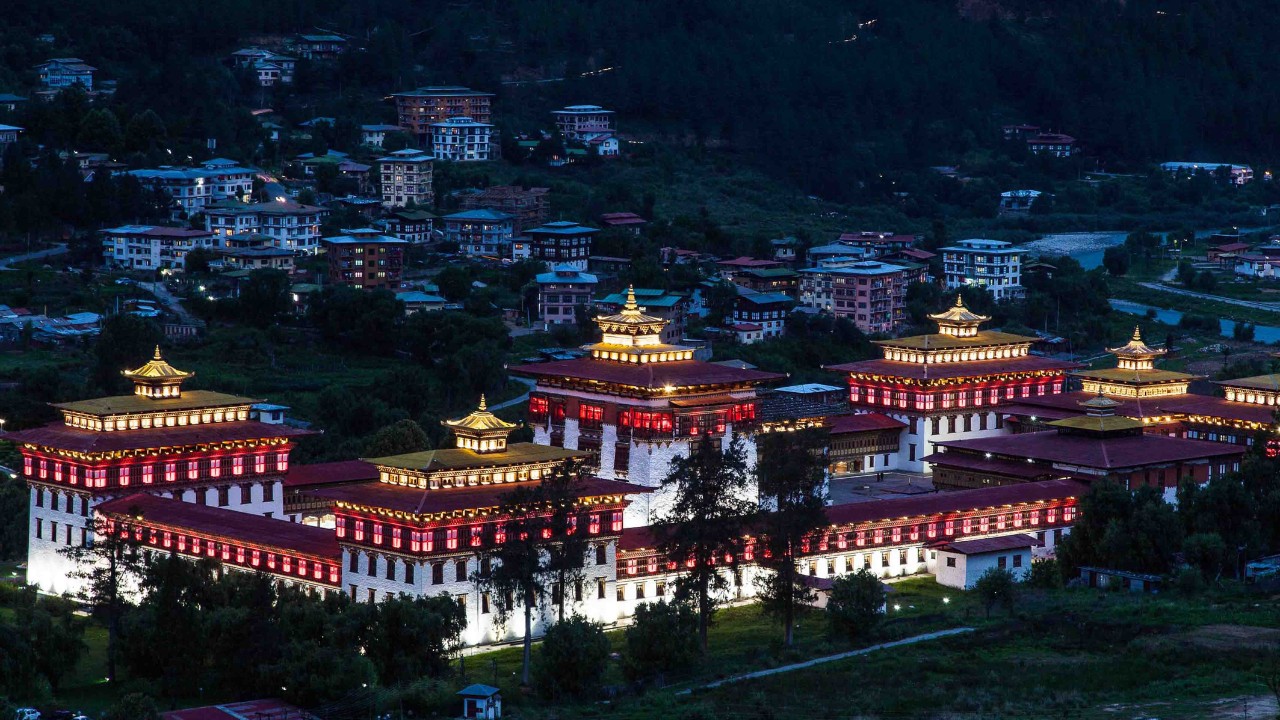
Dzong architecture is a unique style found in Bhutan and Tibet, blending fortress and monastery designs. These majestic structures, often perched on hillsides, serve both religious and administrative purposes. Dzongs are known for their massive stone walls, intricate woodwork, and vibrant murals. They symbolize the cultural and spiritual heart of Bhutanese society. Built without nails, these impressive buildings showcase traditional craftsmanship and resilience. Each dzong has a central tower, courtyards, temples, and administrative offices. Their strategic locations provided defense against invasions. Today, they stand as a testament to Bhutan's rich heritage, attracting tourists and scholars alike. Ready to learn more?
Key Takeaways:
- Dzong architecture, found in Bhutan and Tibet, is a unique style of fortress buildings with historical, religious, and cultural significance. They are not just structures but symbols of power and spirituality.
- Dzongs serve dual purposes as religious and administrative centers, showcasing intricate wood joinery, earthquake-resistant design, and rich Buddhist symbolism. They continue to be relevant in modern times, attracting visitors from around the world.
What is Dzong Architecture?
Dzong architecture is a distinctive style of fortress architecture found mainly in Bhutan and Tibet. These structures serve as religious, military, administrative, and social centers. Let's dive into some fascinating facts about these unique buildings.
-
Dzongs are typically located on hilltops or mountain spurs, providing strategic defense advantages.
-
The word "dzong" translates to "fortress" in the Dzongkha language.
-
Dzongs are often built without the use of nails, relying on intricate wood joinery techniques.
-
The walls of dzongs are usually sloped inward, giving them a distinctive appearance and added stability.
-
Dzongs often house both monks and government officials, serving dual purposes.
Historical Significance of Dzongs
Dzongs have played a crucial role in the history and culture of Bhutan and Tibet. They are not just architectural marvels but also symbols of power and spirituality.
-
The first dzong in Bhutan, Simtokha Dzong, was built in 1629 by Zhabdrung Ngawang Namgyal.
-
Dzongs were often constructed to commemorate significant victories or events.
-
Many dzongs contain relics and artifacts of historical and religious importance.
-
Dzongs have been the sites of numerous battles and sieges throughout history.
-
The construction of dzongs was often funded by local communities, showcasing collective effort and devotion.
Architectural Features of Dzongs
The unique architectural elements of dzongs make them stand out. These features are not just for aesthetics but also serve functional purposes.
-
Dzongs typically have massive courtyards used for ceremonies and gatherings.
-
The main entrance of a dzong is usually heavily fortified with large wooden doors and iron studs.
-
Dzongs often feature elaborate murals and carvings depicting Buddhist deities and legends.
-
The roofs of dzongs are usually adorned with golden spires and intricate woodwork.
-
Dzongs are designed to be earthquake-resistant, a crucial feature in the seismically active Himalayan region.
Religious Importance of Dzongs
Dzongs are not just administrative centers; they are also spiritual hubs. They play a vital role in the religious life of the communities they serve.
-
Many dzongs house important Buddhist relics and scriptures.
-
Dzongs often serve as the residence for high-ranking lamas and monks.
-
Annual religious festivals, known as tshechus, are held in dzongs, attracting large crowds.
-
Dzongs often contain temples and shrines dedicated to various Buddhist deities.
-
The architecture of dzongs is designed to reflect Buddhist cosmology and principles.
Modern-Day Relevance of Dzongs
Despite their ancient origins, dzongs continue to be relevant in modern times. They have adapted to contemporary needs while preserving their historical and cultural significance.
-
Many dzongs have been restored and renovated to preserve their structural integrity.
-
Dzongs continue to serve as administrative centers for local governments.
-
Some dzongs have been converted into museums and cultural centers.
-
Dzongs are popular tourist attractions, drawing visitors from around the world.
-
The construction of new dzongs follows traditional architectural principles, ensuring continuity.
Unique Dzongs Around the World
While dzongs are primarily found in Bhutan and Tibet, their influence can be seen in other parts of the world. These unique structures have inspired various architectural styles and practices.
-
The Punakha Dzong in Bhutan is considered one of the most beautiful dzongs, known for its stunning location at the confluence of two rivers.
-
The Tashichho Dzong in Thimphu serves as the seat of the Bhutanese government and the summer residence of the central monastic body.
-
The Potala Palace in Lhasa, Tibet, though not a dzong, shares many architectural similarities and serves as a symbol of Tibetan Buddhism.
The Last Word on Dzong Architecture
Dzong architecture stands out with its unique blend of fortress and monastery elements. These structures, found mainly in Bhutan and Tibet, serve both religious and administrative purposes. Built without nails, they showcase incredible craftsmanship and resilience. The massive walls, courtyards, and temples within dzongs reflect a deep connection to Buddhist traditions.
Each dzong tells a story of history, culture, and spirituality. They’re not just buildings; they’re living symbols of a rich heritage. Visiting a dzong offers a glimpse into the past and a chance to appreciate the architectural marvels of ancient times.
Understanding dzong architecture enriches our appreciation for these majestic structures. They remind us of the ingenuity and dedication of those who built them. So next time you see a dzong, remember the fascinating facts that make these fortresses truly special.
Frequently Asked Questions
Was this page helpful?
Our commitment to delivering trustworthy and engaging content is at the heart of what we do. Each fact on our site is contributed by real users like you, bringing a wealth of diverse insights and information. To ensure the highest standards of accuracy and reliability, our dedicated editors meticulously review each submission. This process guarantees that the facts we share are not only fascinating but also credible. Trust in our commitment to quality and authenticity as you explore and learn with us.
